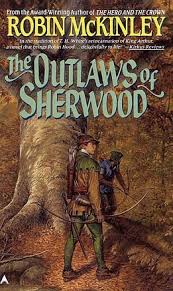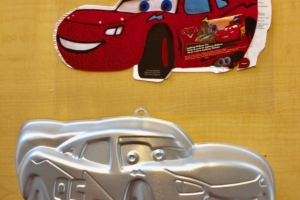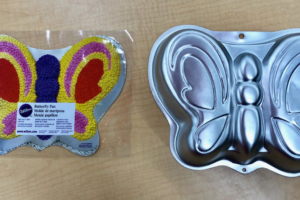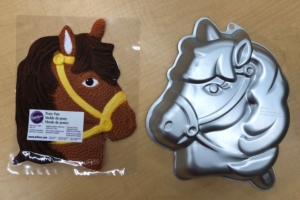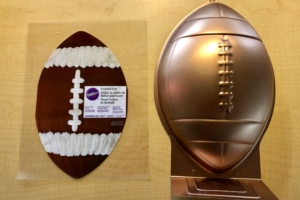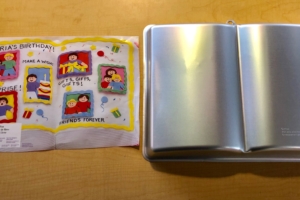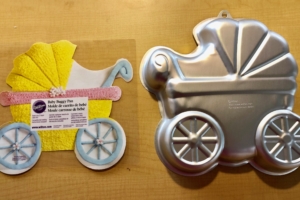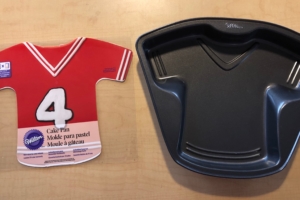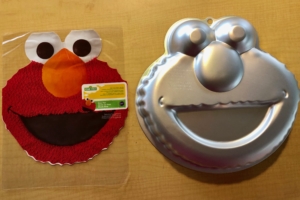Review by Michele Bolay
Before there was Katniss Everdeen, there were the female archers of Robin Hood’s band of outlaws…
Robin McKinley is possibly best known for her Newbery Honor book, The Blue Sword, and for her fairy tale retellings (Beauty, A Knot In the Grain, Spindle’s End), but her lesser-known reworking of the Robin Hood legend, The Outlaws of Sherwood, is a gem.
Most versions of the Robin Hood legend portray the outlaws as adults. In McKinley’s version, with the exception of Little John and a few others, Robin and the outlaws are young, in their late teens to early twenties. This raises the stakes for both the characters and the reader.
Far from having the single noble goal of taking from the rich to give to the poor, the people who find their way to Sherwood in McKinley’s version have many reasons for doing so. Some do come with that goal already in place, but with little understanding of what that entails. Some are poor and homeless and simply have nowhere else to go. Some are actual outlaws, exiled and hiding from the sheriff’s men. And some are running from a life that was not of their own choosing. They are all united in their misfortune, in their care for each other, and ultimately in their struggle for justice, both for themselves and others.
Many of these characters are girls and women. As difficult as life could be for the average man in the Middle Ages, for the average woman it was even more so. She had few choices, no power, and little authority over her own life, let alone anyone else’s. Unless she was a nun or a high-born lady, she likely had no formal education as it was thought unnecessary to educate girls. Very few jobs were open to her. When she married, as most women did, everything that was hers (her land, her money, the children she would have, even her own person) became the property of her husband, to do with as he liked, whether or not he was a good person.
As with the traditional legend and its previous adaptations, there are lots of adventures and action-packed scenes; in particular, the ones where Marian disguises herself as Robin to attend the
tournament, and the final battle between the outlaws and Guy of Gisbourne’s men are heart-in-your-throat suspenseful. But in McKinley’s hands, outlawry is serious business. Violence has heart-breaking, real-life consequences. Capture is basically a death sentence. People are injured, people are killed, people have to answer for their actions and choices. These are believable human beings, not the impervious superheroes that the legend often portrays.
McKinley’s tale remains faithful to the basic outline of the legend, but she puts her original spin on almost every aspect of the story. One of the nicest surprises is that Robin is not the best archer in Sherwood (far from it): Marian is. Another is that he is often a reluctant leader. He has doubts, he struggles to keep his temper, he is not invincible. Indeed, in the final battle, his life is ultimately saved by one of the female outlaws.
Throughout the book, McKinley’s writing is smart, funny, original, thought-provoking, and compassionate. Because of her training as a fantasy writer, she knows how to write an action scene. But she also knows how to make a quiet moment shine, and how to create characters that are complex and compelling. This is a book to be read and re-read. A modern classic, and not to be missed.
Find a copy of The Outlaws of Sherwood at the library today!
About the reviewer: Michele has been at Tredyffrin Library full-time since 1990. She works at the children’s checkout and reference desks, purchases books and media, does some very mysterious things with invoices and time sheets and label makers and such, and runs several programs throughout the year, most notably FRAMED! A Journey in Art and Graphic Novel Book Club. Her favorite genres are mystery, historical fiction, historical romance, folklore, history, sociology, travel, and the arts, and she is also a big fan of audiobooks and podcasts. When not reading, Michele volunteers with Amnesty International, hits the local flea markets, and is involved in various artistic and creative endeavors.

